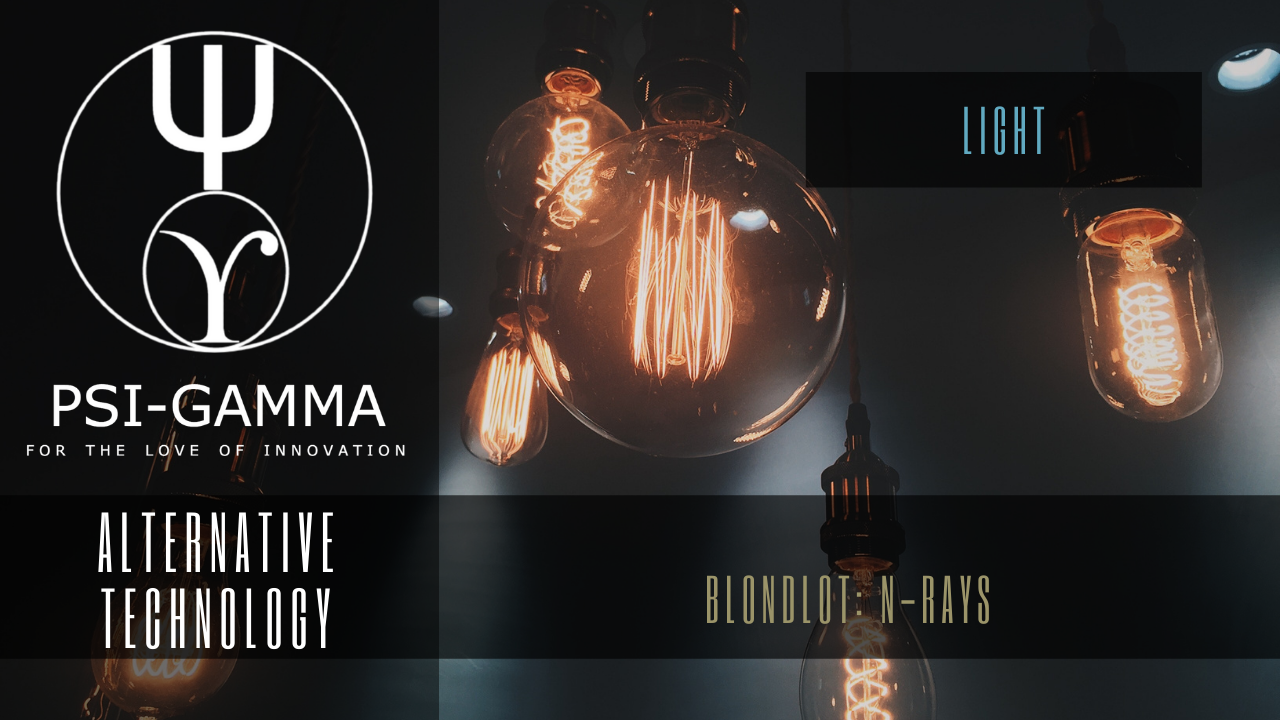
During the period 1903-1906, some 120 trained scientists published almost 300 articles on the origins and characteristics of a spurious radiation, the so-called N rays. Some new explanations are advanced for the extensive false observations and the deductions made from these observations. These are based on visits to Nancy, France, where the purported discovery was first announced and after which the rays were named, on an interview with a former assistant who knew some of the principals involved in the case, and on new archival information. Some of the misleading statements in the subsequent literature and oral history dealing with N rays are challenged, and additional information is provided on the original discoverer, Rene Blondlot.
Introduction
Mistakes in the process of discovery are not rare in physics and the other sciences. Of special interest to physicists is the purported discovery of N rays in 1903 by Rene Blondlot, a professor of physics at the University of Nancy, France. Here is a case unequalled in the number of scientists actively involved and the number of notes and papers published in the scientific journals of the day by scientists qualified by education, academic appointment, and reputation to belong to the community of scholars. Some 120 scientists published almost 300 articles on the topic during the years 1903-1906, and the original discoverer himself published 26 articles and a book (Ref. 1) before halting, while one of his colleagues published no fewer than 38 reports in the same three-year period — all on “rays” which have never since been observed. (Ref. 2)
American physicists, if aware of the case at all, are usually limited in their knowledge to the information found in an account by de Solla Price (Ref. 3) and a popular biography of the American physicist, R.W. Wood (Ref. 4). It is the purpose of this present contribution to correct certain notions about this case presented in that biography, add information gathered during visits to the city where the first experiments took place, and provide a bibliography, especially of references not likely to be discovered by or available to US physicists.
The Purported Discoveries
That such a protracted series of publications could be possible is largely explicable from the fact that the observations of the alleged radiation consisted of subjective viewing by the eye of very feeble and often flickering sources of light, with all the attendant physiological effects and difficulties of reproducing observations (Ref. 5). In his first experiments (Ref. 6), when he thought that x-ray tubes were a source of N rays, Blondlot used as a detector a small spark whose increased brightness was thought to be an indicator of the impinging rays (see Fig. 2). Later he used a low-intensity gas flame as a detector. He soon found additional sources of N rays besides x-ray tubes: (1) Auer and Nernst burners (mixtures of rare earth salts heated to incandescence), (2) the flame of an annular gas burner (but not of a Bunsen burner), 3) a piece of sheet iron or silver heated to dull redness, and (4) the Sun. He found new detectors: (1) a small flame of gas flowing from a small orifice which in turn could be better observed by noting its reflected image from a ground-glass plate, and (2) surfaces covered with a properly prepared deposit of calcium sulfide, which having first been made phosphorescent by sunlight, revealed increased light emission upon exposure to N rays. The difficulty of making uniform films of calcium sulfide mixed with collodion and ether led to confusion in observation, or so it was thought, and in his book Blondlot provided instructions and a sheet bearing 25 calcium sulfide deposits for the reader to use to observe N rays. To observe spectral lines of N rays, he packed a narrow slit with calcium sulfide, moved the slit along in the region of the expected dispersed beams, and when the sulfide showed increased phosphorescence, a line was pronounced present.
Furthermore, he found that N rays could be stored in certain materials. They traversed platinum 4 mm thick, but not rock slat 3 cm thick. They passed through dry cigarette paper but not through the wetted paper. Certain solids in compression emitted the rays, as when a walking cane was bent by the hand and held near the eyes, and the “strengthening action” of the N rays on the retina allowed faintly luminous objects to be seen better. A file of tempered steel held near the eyes allowed surfaces and contours to be seen, as for instance the dial of a clock in a darkened room. He discovered N1 rays, which lessened the luminosity of glowing sources. He found the “heavy emission”, which was claimed to consist of streams of minute particles ejected form metals and certain liquids and to be subject to gravitational attraction.
The Professor of Biophysics in the School of Medicine, Augustin Charpentier, became especially adept at seeing the new rays. In a single month (May 1904) he published seven papers on the subject. He found that rabbits and frogs gave off the rays, Tendons stretched by muscles gave no effects, but the biceps muscle did. N rays increased the sensitivity of the human to vision, smell, taste and hearing. Soon he found the rays from living matter were somewhat different from the N rays, and he called them “physiological rays”. These latter could even be transmitted along wires. Thus a small copper plate is fixed at the end of a copper wire 90 cm long. At the other end is the phosphorescent screen. When the human body is opposite the plate, the screen lights up, indicating transmission of the radiation through the wire. Both the physiological rays and the N rays were transmitted in this way, he claimed. A long list of medical and biological effects were chronicled in a book published at the time (Ref. 7).
We have described only some of the findings claimed by two of the many investigators. So extensive were the supposed properties that G.F. Stradling required 59 pages simply to enumerate or briefly describe the claims made over a 3-year period (Ref. 8). At the same time there were those who could not reproduce the effects claimed. Such recognized physicists as Rayleigh, Langevin, Rubens, and Drude, for example, reported failure. Indeed, within a month after Blondlot’s first announcement, there appeared the first report of failure. But it is the nature of scientific discovery for the world of science to accept the findings of trained, reputable scientists until such time as their results may be disproven by others. Blondlot was a physicist of experience and accomplishment. At the time he was one of 8 physicists who were corresponding members of the French Academy of Science (Ref. 9). He had acquired a doctorate in physics from the Sorbonne in 1881 with a thesis on electric cells and laws of polarization of such cells. He had joined the faculty at Nancy in 1882. In 1893 and again in 1899, he had received prizes from the Academy (Ref. 10).
Similarly, P.M. Augustin Charpentier was a scientist of good reputation, with the title of Professor of Medical Physics at the University of Nancy. His thesis for the M.D. degree had been entitled “Vision with the Different Parts of the Retina”, and he had numerous publications in the field of ophthalmology and physiology, including one, for example, on “Physiological Conditions Influencing Photometric Measurements” (Ref. 11). Here, if anyone, was a man who should have been wary of the mistakes that would be possible during observations of flickering, low-intensity luminous sources. Many other observers who reported success were as experienced as Blondlot and Charpentier.
Wood’s Exposure
The purported finding of a new radiation had, of course, been discussed at meetings of physics societies. There the reaction was almost uniformly one of disbelief, based often on futile attempts made sometimes with specific instructions furnished by Blondlot himself. It was while attending such a meeting in Europe, after having failed to obtain positive results in his own laboratory at John Hopkins, that the American physicist R. W. Wood decided to visit Nancy during the summer of 1904 and ask the discoverer to show him the experiments. The story of his visit is told in various places (Ref. 12). It suffices to say here that during one demonstration, while Blondlot was finding spectral lines in a refracted beam of N rays, he was doing so with an essential part of the apparatus missing. At the beginning of the observations and in the darkness, Wood had placed the necessary prism in his pocket and then replaced it before the room lights were turned back on. Wood’s report signaled the end of the N-ray affair.
Some Explanations
When it became evident that some physicists could not observe the rays, Blondlot invited a few to visit his laboratory, and in the appendix of his book he made suggestions for successful observations. These instructions, themselves not easily followed, provided insufficient aid in observing a phenomenon which did not in fact exist. Hoping the provide objective, convincing evidence, Blondlot took photographs (see Fig. 3) of light sources both when exposed and not exposed to the action of N rays and found those exposed to N rays to have produced a darker negative. But when the nonreality of the rays became apparent, the photographic evidence was explained by his detractors as caused by nonuniform photographic emulsions and poorly controlled exposure time and development. Pierret (Ref. 13) implies that the exposure and development of the plates for equal conditions were not performed by Blondlot but were left to the assistants. In brief, the difficulties introduced by subjective observation of low-intensity sources, whose energy output varied with time, led to spurious results. But this was compounded by the failure of the observers to perform what today we call the controlled experiment, and to apply the classical method of difference and the method of agreement (Ref. 14). Even such psychological factors as can be grouped under suggestibility and hypnosis, and such motivational factors as national pride and the quest for prestige, could have been eliminated or their importance reduced if reproducibility of results and control of the conditions of comparison had been better effected.
Recognition of the inherent difficulty of observation does not alone explain the widespread observations. Deliberate fraud can be ruled out, both because so many different scientists were involved and because they had nothing to gain from reporting findings which could be subjected to confirmation by others. What of deceit on the part of Blondlot’s colleagues and assistants? The two other physicists at Nancy themselves made announcements of N ray discoveries and could not, therefore, be thought to be deceiving or encouraging Blondlot (Ref. 15). And as for his chief assistant, according to Wood, and Pierret, he was not learned enough in science to perpetrate such a deception (Ref. 16). At any rate Blondlot retained his services afterward, and certainly any such deception cannot explain why others in distant laboratories “saw” the effects. For explanations of the involvement of so many persons one might profitably turn to the phenomena of suggestion, hypnosis, and mass hysteria. Such a psychological study waits to be done.
Some New Aspects
A few new aspects to the case have, however, been uncovered by the present writer during visits to the city of Nancy that shed some light on the reasons for the announcement of the original observations by Blondlot. In his book, Seabrook states that “only Frenchmen could observe the phenomena”, a minor exaggeration he must have heard from the flamboyant Wood (Ref. 17). But for the record it should be mentioned that J.S. Hooker (Ref. 18), an Englishman, and F.E. Hackett (Ref. 19), a student at the Royal University of Ireland, reported that they had observed the rays. And another non-Frenchman who observed the rays was Leslie Miller, an instrument-maker of London, who so believed in their reality, or at least in the commercial exploitation of the rays, that he made apparatus for observing them which he sold for L. 1,1,0 (Ref. 20). Seabrook is wide of the mark, on the other hand, when he writes: “The tragic exposure eventually led to Blondlot’s madness and death”. Actually, Blondlot continued in his post of Professor of Physics for six years after Wood’s disclosure. He retired in 1910 (Ref.21) at the age of 61, before the usual age of retirement. He lived for 20 years in retirement, until his death in 1930 at the age of 81 (Ref. 22). During that period he held the title Professor Honoraires (i.e., emeritus) and continued to live in his large home at 16-18 Quai Claude le Lorrain. He continued to have associations with others at the University, as when for example, in 1909, on the occasion of the unveiling of a monument of his friend, Ernest Bichat, Blondlot made one of the speeches. In 1923, a third edition of his book on thermodynamics appeared, and in November 1927, he wrote a new preface for a third edition of his textbook on electricity (Ref. 23). Certainly his long will, frequently revised to accommodate changing conditions, which was duly accepted and probated upon his death, is one prepared by a sane man (Ref. 24).
Nor is there any evidence that he committed suicide, as is sometimes inferred by those who read Seabrook. Blondlot lived some 26 years after Wood’s exposure. Had he taken his own life, he probably could not have been buried in a Catholic cemetery with the full rites of the Church, as was indeed the case according to newspaper accounts. Cemetery records show he is buried in the Cimetiere de Preville, the central one of the city.
Modern scientists at the University of Nancy know little or nothing about the history of N rays, and those who do are usually reluctant to speak of the mater. Two, however, freely expressed themselves on the impressions they had acquired from colleagues who had been alive at the time or who in turn had known such. One I interviewed was Josef Bolfa, Prof. of Mineralogy and Crystallography, who has long had an interest in the history of the University. His view is that a prominent, but little recognized factor in the discovery was the national and regional pride of the Nancy professors, who were aware of the recent discovery of the cathode rays, x rays, and canal rays by their counterparts in other countries wanted to bring fame to France and exploited the original observations without due regard to firm evidence. Moreover, he said, Nancy has for a long time been a garrison city in the French military system. Repeatedly he used the words, “C’est une erreur”.
E. Pierret, with whom I talked, probably has more direct knowledge of the case than anyone else. Retired now from his post of chief assistant in the Department of Physics, he told me he had known the assistants who worked with Blondlot and Charpentier, and he showed me the very prisms and lenses (Ref. 25) used by Blondlot in his investigations. He had talked with Blondlot in 1926, at which time Blondlot did not appear to have lost his intellectual powers. Blondlot, he said, continued to believe in the existence of N ryas after he stopped his active study of them in 1906, and continued to teach for a few years afterward. He never blamed his former assistant for any deception (Ref, 26), but, at the same time, Pierret noted, in the days prior to the N rays studies, one of the assistants had received from Blondlot part of the prize money won by Blondlot for discoveries made in the laboratory and doubtless welcomed the prospect of new awards for the finding of this new, extraordinary radiation, a prospect which might have influenced his observations. It was the custom of the day for an experimentalist to give but general instructions to an assistant, who would be expected to build or assemble apparatus and make many of the observations. This was Blondlot’s custom. Pierret felt also that the assistant responded to the suggestions and authority of the professor and sawmore than the evidence warranted.
A useful summary of the case, entitled “A la Poursuite des Rayons N”, was published in 1965 by C. Gelain and H. Geoffrey, who include photographs of some of the prisms and lesnes used by Blondlot as well as a photograph of Blondlot’s laboratory of about 1900 (Ref. 27). Another interesting summary is that of Jean Rosmorduc (Ref. 28). A brief treatment of the case is given by Jean Rostand (Ref. 29), while some of the psychological aspects have been discussed by Y. Galifret (Ref. 30).
Acknowledgments
It is a pleasure to express my thanks to Mr. Emile Pierret, Prof. Joseph Bolfa, and, especially, Prof. Jacques Touret — all of the University of Nancy — for much assistance and fruitful discussions. Part of the study was supported by a grant from the Vanderbilt University Research Council.
References
(1) R. Blondlot, N Rays: A Collection of Papers Communicated to the Academy of Sciences; Transl. J. Garcin; Longman, Green, London, 1905. French edition, 1904, by Gauthier-Villars, Paris.
(2) See G.F. Stradling, J. Franklin Inst. 164: 57-64 (1907); ibid., 164: 113-130 (1907); ibid., 164: 177-199 (1907). Written at the close of the period of active interest in the rays, this series of three articles gives the most comprehensive recital of the alleged discoveries. Stradling lists 278 references to original articles, resumes, and editorial comment. In addition, he states, there were summaries in 15 other professional and popular magazines.
(3) D. J. de Solla Price, Science Since Babylon (Yale Univ. Press, New Haven CT, 1975), pp. 153-160.
(4) W. Seabrook, Doctor Wood (Harcourt, Brace and World, NY, 1941), pp. 233-239.
(5) The speculations, false starts, spurious results, and confusion attendant upon the study of N rays are similar to those associated with the early observations of radioactivity by Henri Becquerel and others, but of course the N rays were spurious, while the rays of radioactivity were not. See L. Badash, Amer. J. Physics 33: 128 (1965).
(6) R. Blondlot, C.R. Acad. Sci. 136: 284 (1903); ibid., 136: 735 (1903); ibid., 136: 1120 (1903); ibid., 137: 684 (1903).
(7) H. Bordier, Les Rayons N et les Rayons N1; Les Actualites Medicales (Baillere, Paris, 1905).
(8) G.F. Stradling, Ref. 2.
(9) There were also 6 regular members who were physicists, and 4 foreign members: Rayleigh, Hittorf, van der Waals, and Michelson.
(10) Rene Prosper Blondlot was born on 3 July 1849 in Nancy, France, and died in the same city on 24 November 1930. He was the son of Nicolas Blondlot (b. 1808), who held an M.D. degree and was for a long time Prof. of Toxicology in the Faculty of Medicine. In 1893, the French Acad. Awarded him the Gaston Plante prize, in 1899 the LaCaze prize, and in 1904 (with the N ray controversy at its height), the Le Conte prize. He had been elected a correspondent of the Academy in 1894, taking the place of Helmholtz.
(11) A. Charpentier, C.R. Acad. Sci. 103: 130 (1886)
(12) W. Seabrook, Ref.4; Nature 70: 530 (1904); Electr. Review 45: 630 (1904); Phys. Zeitschr. 5: 789 (1904); Rev. Sci.. 2: 536 (1904).
(13) E. Pierret, Bull. Acad. Soc. Lorraines Sci. 7: 240 (1968).
(14) These methods are much used by physicists who, on the whole, are often not aware of their formalization by J.S. Mill and others. However, much as Mill’s canons have been criticized, they would have been useful guides to N ray students.
(15) In 1905, at the height of the N ray controversy, there were two professors of physics at Nancy, Rene Blondlot and Ernest Bichat. This unusual arrangement (of more than one) was brought about by Bichat’s added duties as Doyen (Dean) of the Faculty of Sciences. Bichat died in 1905; a life-size statue of him presently stands before a science building of the University. A third scientifically trained member of the department was Camille Gutton, who at the time was Maitre de Conferences (in charge of the teaching duties of the department). Upon Blondlot’s retirement, Gutton was made Prof. of Physics, and upon Bichat’s death he was made Dean, upon the condition that he not persist in expressing a belief in the reality of N rays.
(16) During my interview with him, Pierret declined to reveal the name of Blondlot’s assistant.
(17) Seabrook also has Blondlot announcing his discovery “in the late autumn of 1903”, whereas in his paper of 23 March 1903, C.R. Acad. Sci. 136: 735 (1903), the discoverer used the words “n-rays”, which were later changed to “N-rays”.
(18) J.S. Hooker, Lancet 1:686 (1904); ibid., 2: 1380 (1904).
(19) F.E. Hackett, Sci. Trans. Roy. Soc. Dublin 8: 127 (1904); Nature 70: 167 (1904); ibid., 70: 583 (1904).
(20) L. Miller, Electrician (Lond.) 52: 788 (1904), an advertisement; Lancet 1: 610 (1904); ibid., 1: 831 (1904); ibid., 1: 1150 (1904).
(21) Pierret, in Ref. 13, states that in November 1909, Blondlot chose to retire from his University post. “It has been said”, writes Pierret, “that he [resigned] at the instance of a committee of inquiry”. Probably the retirement became effective about September 1910.
(22) See C’est Republicain (daily newspaper of Nancy) for 27 Novemeber 1930. Also Biographique des Membres et Correspondants de L’Academie des Sciences; (Gauthier-Villars, Paris, 1954).
(23) E. Bichat and R. Blondlot, Introduction a l’Etude de l’Electricite Statique at de Magnetisme (Gauthier-Villars, Paris, 1927).
(24) The will is to be found in Archives Departmentales/Archives Historiques/Centre de Documentation Administrative/Service Educatif in Nancy. Blondlot never married and at his death had no close living relatives. A portion of his estate was divided among servants and friends, but the largest part, his house and garden of about 1.65 acres, was given to the city of Nancy to serve, in the case of the garden, as a place of rest for the townspeople and, in the case of the house, as a place where young people could come to obtain advice about job and educational opportunities. They are in use today for the purposes intended. The entire estate was valued at over one million francs. As a consequence of his beneficence, the city bestowed on him a special title. The park adjacent to his former home bears the inscription Pac Blondlot above the entrance. A street in the city is also named after him.
(25) The writer saw and handled these items. There were 5 prisms which appeared to be made of aluminum, silver, clear (transparent) quartz, smoky quartz, and wood. The height of each was about 6 cm. The faces of each approximated squares. One prism (Ag?) of which I drew the base by drawing a pencil along the edges as I held it on a piece of paper, had a prism angle of about 29*. The others appeared to the eye to be somewhat smaller, all with a prism angle of perhaps 22*. A metal plano-convex lens of aluminum measured 7 cm in diameter. I estimated the curvature of its convex face to be about 30 cm radius. Pierret did not show me, if indeed they were in his possession, the 60* and 90* aluminum prisms used by Blondlot. Pierret became an assistant in the department about 1928. One day while taking an inventory of the contents of a laboratory, he came upon the materials used in the N-ray work. Another assistant, said Pierret, warned him not to touch them or to speak of the subject to the professor in charge. In 1962, when he retired from the post of Maitre de Conferences, the materials came into his possession.
(26) This belief is also expressed in Pierret’s article on the subject. See Ref. 13, p. 254.
(27) C. Gelain and H. Geoffrey, Ing. Ind. Chim. 41: 7 (1965).
(28) J. Rosmorduc, Rev. Hist. Sci. Leurs Appl. 25: 13 (1972).
(29) J. Rostand, Error and Deception in Science (Basic, NY, 1960).
(30) Y. Galifret, Courr. Ration. 9: 191 (1963).

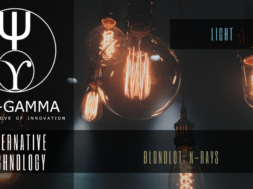
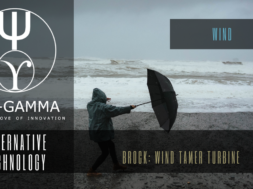
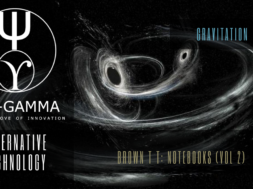
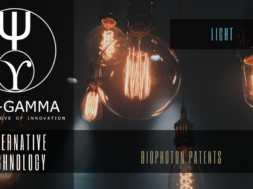
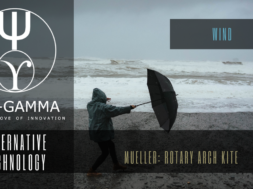
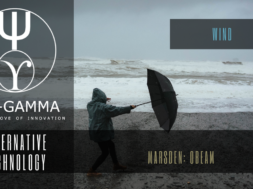

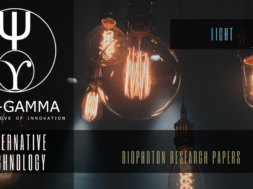
обзор changan uni https://changan-v-spb.ru